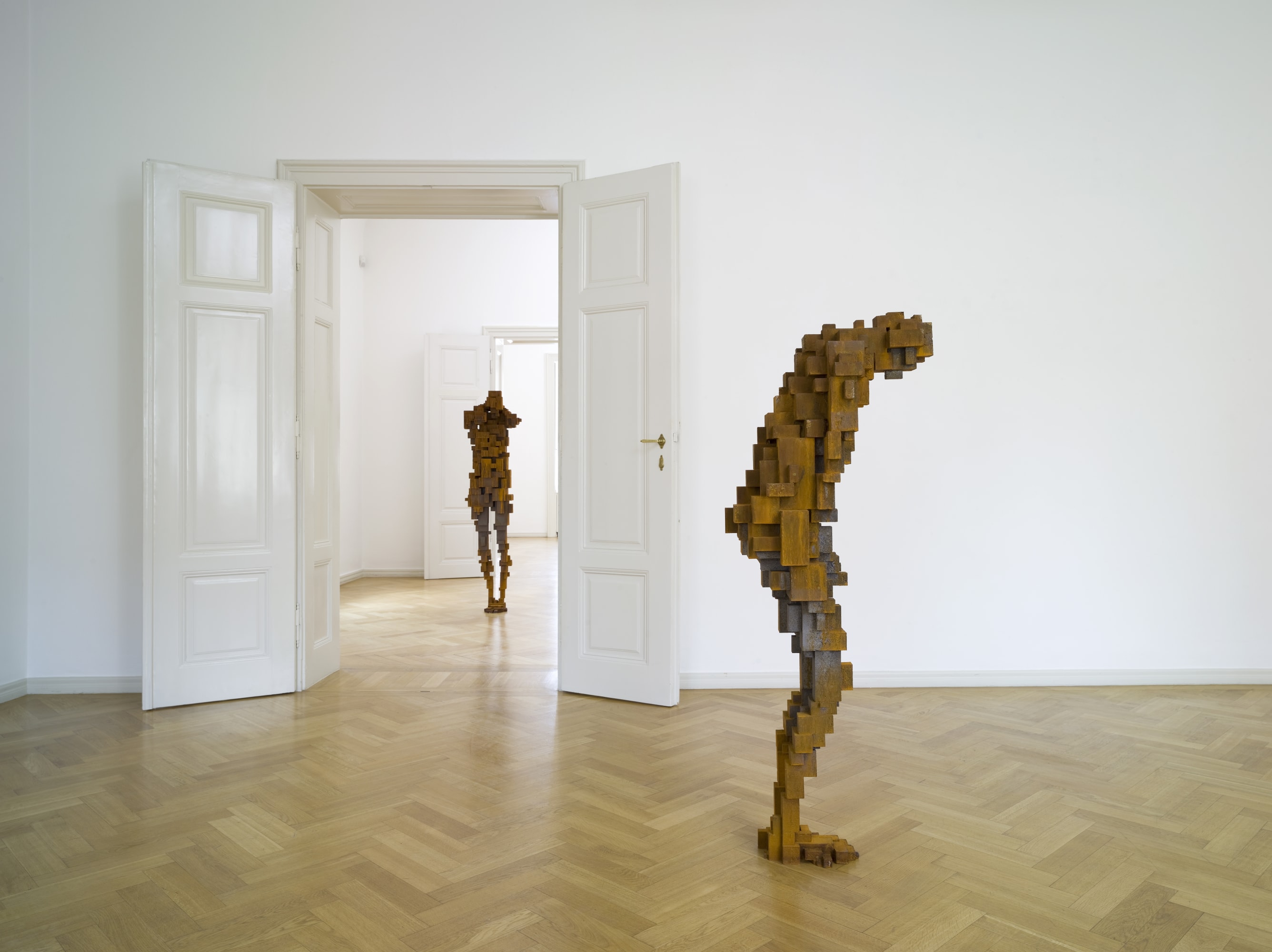Galerie Thaddaeus Ropac is pleased to announce the upcoming exhibition ATAXIA II with new sculptures by Antony Gormley. ATAXIA is a greek term to imply the state of disequilibrium.
The upcoming exhibition shows a serie of standing figures made out of steel blocks. The sculptures should imply the body as an architectural space of some measure. In ATAXIA II Antony Gormley shows the sculptural body in a moment of spasm, as if the body got lost its center of gravity. In medical terminology this condition is illustrated by a progressive loss of coordination which is attributed to a severe dysfunction of the central nervous system.
For the artist the problem of order and disorder, symetrical structures vs. assymetrical structures is particularly resonant in all of his new works. Antony Gormley is an artist who is well known for his faszination by the physical and sculptural presence of the body skin and bones.
Antony Gormleys unique interest is grounded in the specifics of our physical condition, within a wider matrix of forces, both social and gravitational have built a long and evolved practice where the individual is confronted with these parameters.
In summary it is a large scale installation aposing the individual within the group or the construction of an architectural space or field and the individual body within it. Both conditions are important in this new group of sculptures shown in ATAXIA II. By placing one figure in the center of each room in the gallery, the artist wants to invite the viewer to both empathize and ruminate on the condition of each individual sculpture. The titles of these seven works themselves suggest the physical stance of the sculptures. Turn, Splice, Shrive, Shy, List, Clutch, Haft. The body positions take the steel block figures into a twisted and movement filled gyration and they appear to be animated by this unknown spasm coming from somewhere deep inside their core.
The exhibition also shows four new works where the field of the body is described by horizontal square and rectangular forms splaying out from the spine. The affect is a grid like structure built in new forms like the patterns in a Mondrian painting. The physical form of the body is no longer its own. The field around it is created through this new superimposition of geometrical forms.
The exhibition is accompanied by a catalogue with a text VISIBLE ENTROPY written by Professor Rod Mengham of Jesus College, Cambridge University.













































































































































































